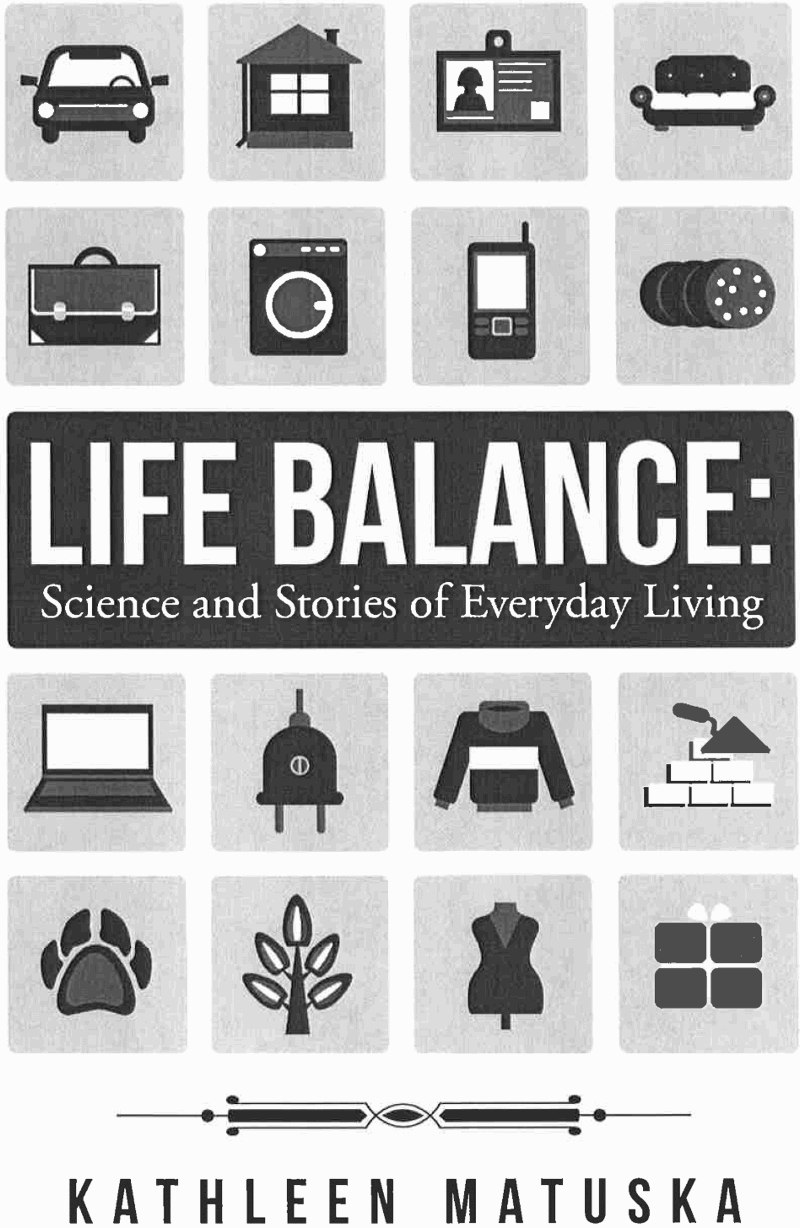
Dr. Matuska is well known for her work on life balance, or occupational balance, terms that she uses synonymously. In Life Balance: Science and Stories of Everyday Living, she seeks to neutralize the distance between scientists and the curious public by translating research concepts of life balance for non-scientists. Her goal is to allow students, researchers in training, occupation therapy practitioners, and the general public to appreciate the subtleties of this important concept. To assist her, Dr. Matuska recruited four equally well-known and respected researchers who highlight their perspectives on occupational science research and their application to life balance concepts. Drs. Catherine Backman, Petra Wagman, Hans Jonsson, and Carita Hakansson each provide context for the second part of the text. Consistent with the life balance literature and to suit her intended audience, the term “activities” is used throughout, rather than “occupation”.
The text introduces personal application of scientific concepts, while including elements of a self-help book. It is succinctly presented in two parts. The first focuses on background information regarding life balance, the current state of the research, and why life balance may be critical to health. The introduction of engagement in occupation as a buffer against negative, and perhaps unavoidable, effect of stress (e.g., exercise) is helpful. The rather simplistic notion that there is an “ideal” balance to be found in life is eliminated, which is useful in applying these concepts to everyday life.
Chapter 3 provides a more nuanced view of life balance, presenting key concepts, varying definitions, and how differing concepts lead to greater exploration. One particularly useful section relates to understanding the concepts of life balance as a balanced mix of types of everyday experiences. Three different types of categorization methods are briefly summarized including; categorizing daily occupations into one of three groupings based on a skill to challenge ratio, placing everyday occupations in a context of whether they are in harmony with personal values, and finally using the outcomes of your life or how you feel about your overall experience of life vs. a categorization of occupations. The categorization method for everyday experiences is briefly explained by placing occupations into categories by comparing skills to the challenge of each one, that is: highly challenging but well matched to requisite skills, highly challenging but not well matched to the person's skills, and unchallenging and simple routine tasks that require little thought. In the highly challenging but well matched category, a person might be likely to experience an occupation as intensive but rewarding, whereas one that is highly challenging but demands skills the person does not have is likely to be experienced as stressful. Lastly the occupations that are done routinely might be either highly pleasurable or relaxing or simply boring. Life balance is then presented as a relative distribution of these three categories of occupations, wherein there is not a preponderance of any one category.
In another strategy, occupations are instead categorized by congruence with personal values and occupations that are most consistent increase the degree to which a sense of balance is experienced. The final categorization pattern eliminates the examination of daily occupations and views the overall milieu of life satisfaction. No one of these categorization schemes is placed over another, and all of these concepts are presented in lay terms and should be helpful to the general public, students, and practitioners who strive to incorporate life balance into daily life.
Part two of the book focuses on more fully developing the five elements or characteristics of life balance. These five characteristics that researchers/contributors to the text agree upon are: that we experience life balance as relative balance with change occurring frequently, life balance requires engagement in daily life and responsive to the fluctuations of occupations day to day, relative life balance is likely good for positive health and well-being outcomes, everyone experiences life balance differently, and finally the environment has a significant influence on life balance. Each chapter in this section highlights what leads researchers to agree on one of the characteristics.
Alongside discussion of the research, interviews with people in a variety of life stages are shared to lend a personal story to the research. The presented case studies and interviews illustrate the main points and balance the explanatory text nicely. Exercises geared toward helping the reader apply or incorporate these concepts are also included. For example, in the chapter that focuses on engagement in occupation the reader is invited to keep a log of occupations for 24 hours and then reflect on the “balance” using a series of thoughtful questions. Exercises in other chapters are more challenging. Some are more reflective and encourage the reader to take stock of their impressions of their state of health or their daily environment. One exercise encourages the reader to create a personal life balance definition; another asks them to survey their environment and note access to green space, safe walking areas, and social opportunities. These exercises could be quite useful to generate discussion for students or prompt beginning researchers to understand how these tools could be used to generate the study of occupation.
Anyone who has attempted to translate research concepts, by reducing the language and construct barrier, knows how difficult it is to find the place between over simplification and nuanced knowledge. In this book, Dr. Matuska finds that balance many times. While there is some oversimplification, the majority of themes provide greater accessibility and understanding. Thus, the text should prove an excellent addition for students, beginning researchers, and others who hope to learn more subtle concepts of life balance. This book provides readers with what researchers think of life balance, highlights common themes about what a balanced life looks like, and highlights the mental and physical health benefits related to living a balanced life.
